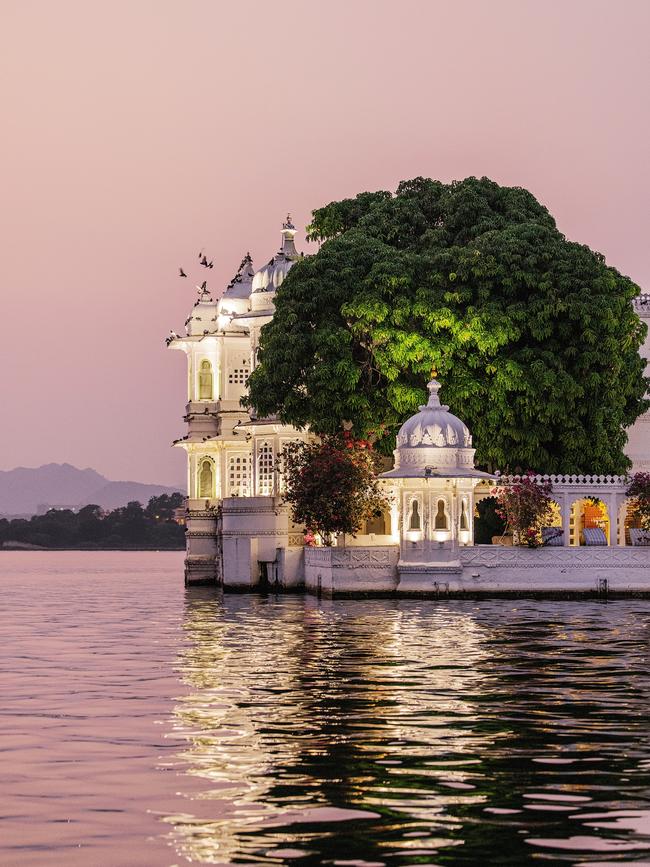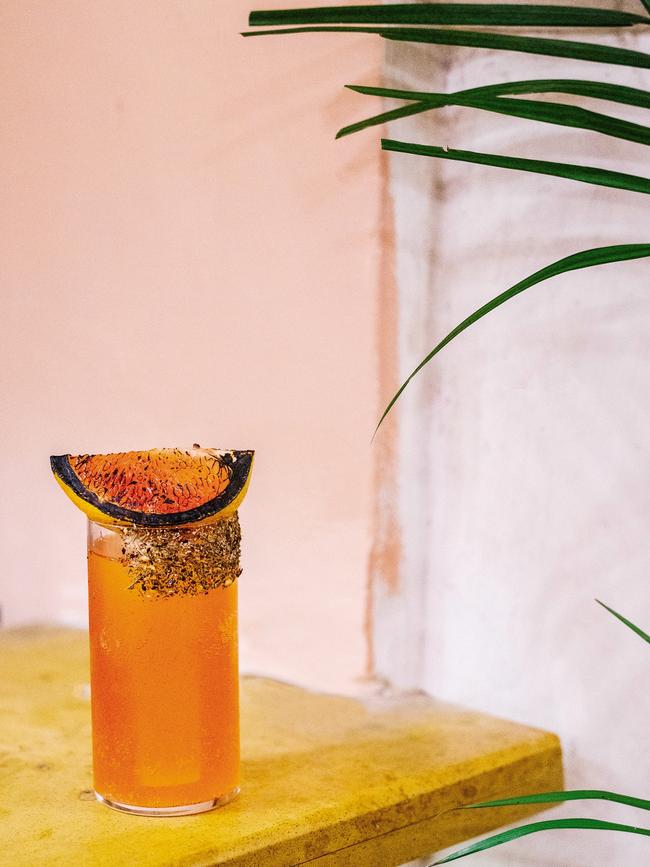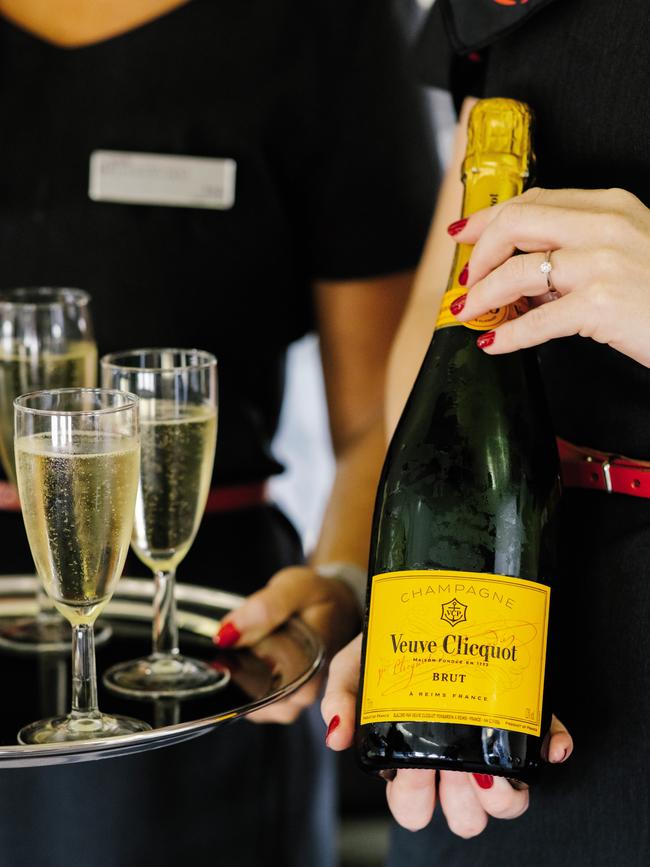From the Taj to the Raj: India by private jet
The cultural treasures, glittering cities and karmic spirit of the subcontinent are showcased on a private airplane tour that flits from north to south and back again.

Bedecked for the festival of Diwali, Jaipur emulated a waking dream. In the half-light of dusk, the Pink City became a rhapsodic swirl of colours, a Rajasthani miniature painting enlarged and projected onto stately palaces, storybook forts and colonnaded streets. On Mirza Ismail Road, fireworks spangled the blushing sky and folk melodies wafted from tinny speakers. Jubilant crowds gathered outside the Palace of Winds, squeezed into rickshaws, and shopped for marigold garlands and brass oil lamps in the bazaars. For a first-time visitor to India, Diwali was the gift that kept on glowing. It felt as though Jaipur had been lit up expressly for me.
Enormous, frenetic, enthralling and confronting – India is a sensory provocation. But last October I embarked on a 15-day circuit of the subcontinent with Captain’s Choice, the Melbourne-based tour operator known for designing elaborate global excursions. From the exalted steps of the Taj Mahal to the sacred ghats of the Ganges, from verdurous Kochi to glamorous Jaipur, our expedition unfolded aboard a privately chartered aircraft. Every detail, from arranging porterage to engaging expert local guides and smoothing navigation through the whirlpool of urban India, was artfully arranged. Travelling in this rarefied way meant that the pervasive chaos was effectively cushioned with finely spun silk.


Our group, comprising 45 inquisitive guests and four attentive staffers, convened in Singapore before boarding our polished plane. History buffs had their interests promptly fulfilled in Agra, our first stop, where the Taj Mahal unveiled itself. Shrouded in mist, its alabaster domes appeared almost within reach from the terrace of the Oberoi Amarvilas. The lodging’s proximity allows uninterrupted views of a site swamped by tour buses – 40,000 visitors reportedly arrive each day. With fountains, pools, and feather-clad dancers spinning like tops to mark our arrival, the Oberoi is a regal retreat for cooling your jets. Its Moorish-Mughal design, fancy topiary, and palatial pool are worthy of a Bollywood blockbuster. The contrast with Agra, a dusty and dilapidated city, is pronounced.
Early the next morning we made our approach to the Taj Mahal on the hotel’s designated buggies. Arriving at dawn meant brisk access to the marble mausoleum and unobstructed ogling of its exquisite symmetry and Persian calligraphy. Seeing it triggered a strange blend of awe, admiration and fascination. Inside, my eye was drawn to a pair of cenotaphs, both empty, inlays of semiprecious stones and marble lattice screens – Mughal to the max. Behind the landmark’s grandeur lies a tragic backstory. Shah Jahan erected the memorial to honour his wife, Mumtaz Mahal, who died in 1631 giving birth to their 14th child. The emperor spent his final years at nearby Agra Fort, an interplay of palaces, pleasure gardens and audience halls. Ironically, he was imprisoned here by his usurping son, Aurangzeb, confined to admire his monumental work from afar.


The Taj checked off our list, we were soon on the move again. “Our tour is a masala mix of India,” said guide Digvijay Ranawat as we ascended the skies. Ranawat was an eloquent interpreter of Mughal emperors, Rajput princes and the caste system that informs almost every aspect of social and religious life. Located along the Ganges, Varanasi hums with holiness and grittiness. “Driving here is very hard,” sighed my driver as he slammed his horn. In the clogged street ahead, an elegant sari-clad woman gripped her scooter driver with a single hennaed hand. To reach BrijRama Palace, an eclectic riverfront hotel with Maratha-era motifs, Greco-Roman statuary and vegetarian fare, we transferred to small boats. As we approached the Old City, with its crumbling buildings and countless temples, the air grew thick with incense, wood fires and the unmistakable scent of mortality.
Varanasi is where the faithful congregate to worship, conduct bathing rituals and cremate their loved ones. Hindu pilgrims have long gravitated here to die, believing it will deliver liberation from the cycle of rebirth. Its labyrinth of alleyways brimmed with stores purveying sandalwood paste for anointing foreheads, clay urns to collect ashes and chakra-cleansing Rudraksha beads. Outside a cobalt-blue building, I listened as young priests learned to chant – divine worship on training wheels. That night, we witnessed an aarti ceremony at one of the city’s 84 ghats (stepped riverbanks) where solemn boys in saffron robes wielded incense-filled vessels and performed rites. Some waved plumed “chanwar” to cool Mother Goddess, the temple equivalent of a mini fan. Back at the hotel, a flute player in the central atrium played mellifluous tunes, and I drifted off to sleep with visions of the goddess Shakti.
At sunrise, we sailed the Ganges once more. Highly polluted it may be, but the river is regarded as a living deity by devout Hindus. “Close your eyes and feel its beautiful energy,” said Shailesh Tripathi, a genial scholar who later dolled out palm readings to some of the guests. A ferocious Turner-like sun pierced the hazy sky as the silhouettes of camels came into focus on the eastern bank. On the western side, holy men gathered under umbrellas and monkeys scuttled across rooftops. A trio of women, with matching purple saris and pious expressions, were immersed in waist-high water. A silver-haired gent swathed in periwinkle fabric was submerged up to his neck. Boys leaped into the river like carefree divers at a public pool.
It’s impossible not to be moved by Varanasi. I left with a new-found respect for the communal bliss of a country so dedicated to ritual and public ceremony. After our revelatory dip, we proceeded to India’s east coast for yet another cultural fix. Founded as a trading post, Chennai is a steamy, zestful city famed for its religious shrines, colonial buildings and the sprawling Marine Beach. Formerly known as Madras, Chennai is also a textile haven and I spent an afternoon unpicking this vivid heritage. I discovered Kanchipuram silk weaving, hand-painted kalamkari cotton, and luminous interpretations of traditional garb at savvy retailer Collage. At the Leela Palace, a sumptuous hotel right on the water in the Bay of Bengal, I watched well-heeled wedding guests stream into the ballroom for a marathon celebration.


Late October, marking the end of the monsoon season, proved to be the optimal time to explore India. When rain sheeted down in Chennai the next morning, one of the few occasions we encountered a grey squall, we were already making our exit. The state of Kerala lies at India’s southern tip, where forty-four rivers run to the sea, spawning lakes, lagoons, and a network of serene backwaters. It felt like arriving at another country – “God’s own country,” as Keralites like to say. Just south of leafy Kochi, we cruised the brackish waters in a bamboo houseboat. Bronze-coloured brahminy kites circled above, fishermen slowly motioned in canoes, and ramshackle shore-side dwellings all added to the tropical languor.
Blessedly unhurried, Kochi was the perfect antidote to our action-packed itinerary. There were multicourse dinners animated by green-faced Kathakali dancers, their hand gestures weaving intricate stories. There were visits to Portuguese and Dutch colonial-era houses in Fort Kochi. The 16th-century Mattancherry Palace was a treat, with its coffered ceilings, ivory-studded palanquins and well-preserved murals depicting scenes from the ancient Sanskrit epic Ramayana. Exploring nearby antique stores that teemed with quirky gewgaws and furnishings, I passed a synagogue, the last vestige of a once-thriving Jewish community. On the shore, Chinese fishing nets, spider-like contraptions balancing on teak poles, hauled in a catch.


The liquid abundance of the subcontinent was on display in Udaipur in north-west India, too. As one of the country’s top-tier wedding destinations, the city is a whimsical confection of white marble palaces, artificial lakes, and the violet peaks of the Aravalli Range. A brief boat transfer deposited us at the Taj Lake Palace, the legendary hotel built between 1743 and 1746 and perched on a rocky enclave adrift on Lake Pichola. Lavishly clad dancers whirled, musicians plucked Hindustani songs and rose petals cascaded onto the guests. That night, dinner took place on the terrace with unfettered views of City Palace, which cast shimmering reflections in the waters below.
Staying at India’s palace hotels is a history lesson, but with the benefit of air-conditioning. The next morning, awakened by a chorus of birds, a few of us explored Udaipur. We alighted first at City Palace, whose construction began in 1559. A pastiche of Rajasthani, Mughal and Mewar styles, the landmark features various structures, including 11 smaller palaces, built and extended by successive maharanas. All were fond of flamboyant gestures: cupolas decorated in mirror-work, sun-faced brass emblems, peacock reliefs and murals. Jharokhas, latticed stone windows, offered staggering city vistas. Even the dandified palace guards wore rakish red caps adorned with pink and orange feathers.


Naturally, all this craftsmanship inspired a shopping jaunt. The creative fertility of India, where so much is still fashioned by hand, is boundless. In rickshaws, we whizzed along narrow, winding streets with the alacrity of James Bond in Octopussy, filmed here in 1982. We passed market stalls, musty stores, and emporiums specialising in blue ceramics, block prints, lac bangles, and juttis, the bedazzled slip-ons worn for centuries. In the spice market, sawtoothed chunks of jaggery resembled sweet bricks. “This is the real India – not the palaces,” said guide Girish Nagarkoti. At Ganesh Emporium, an Aladdin’s cave of art, fashion and home items, I had a hankering for a Shiva painting on linen. I coveted so much more.
A short flight the following morning deposited us at Jaipur. Fastidiously laid out in 1727 by founder Jai Singh II and architect Vidyasagar Bhattacharya, the city is a spirited meeting of symmetry and cacophony. Horned bulls wandered the streets, gazing wistfully at the unruly traffic. At its heart is the City Palace, still home to the former royal rulers, whose carved doorways and chromatic ornaments render it a three-dimensional Pinterest board. Jaipur is the gemstone capital of the world, and at jeweller Gyan we watched laser-focused craftsmen (and two women) shaping, polishing and wrangling sparkling rocks into gold settings. They rinsed their hands in water later sold to extraction companies.


A flurry of activities ensued the following day, from hot-air ballooning to rug scouting, as we delved further into the Rajasthani capital. At Amber Fort, on the outskirts of the city, I observed benighted tourists ride captive elephants, and the majestic creatures appeared sadly downtrodden. A far more uplifting sight was the dazzlingly decorated Sheesh Mahal, with its mirror-studded walls, pillars and ceilings. An ancient stepwell brought to mind the optical illusion of an Escher print, while a snake charmer in the parking lot reminded me of an Henri Rousseau painting. It also inspired me, later that day, to scoop up a brass candlestick in the shape of a cobra.
Our hotel in Jaipur was the magnificent Oberoi Rajvilas where I had one of the standout feasts of our picaresque adventure. Thali, a platter holding an array of dishes in small bowls, is a common meal, but this elevated version included mutton with spicy chilli gravy, ghatta dumplings, and dried beans with berries. Sated, I circled back to the Old City for one final bite. The festival crowds were out in force and I found solace at the bar of the Johri hotel with its hand-painted murals and impeccably prepared cocktails. Ensconced here, I reflected on the manifold splendours of our trip. If travel is a way to be reborn, to return to our impressionable youth, India resonates more than most places. It washes over you and turns you upside down. It leaves you awed, humbled and forever altered.
The writer was a guest of Captain’s Choice. The next departure for its 15-day Spirit and Colours of India tour is October 19, 2024. captainschoice.com.au
With flying colours


-


If you subscribe to the notion that the journey is as important as the destination – or even more consequential, as Ralph Waldo Emerson once observed – the Captain’s Choice approach of chartering private planes for global forays might appeal. The company, which has orchestrated over 100 jet-setting tours, is well-versed in the logistical requirements and regional vagaries of air travel. For this Indian odyssey, a paisley-shaped route that flitted from north to south and back again, guests flew on a Boeing 737-700 NG with a spacious business-class configuration. The experience was seamless, convivial and supremely convenient.
India can be a confounding place for visitors and there was reassurance in having the ability to move around at our own volition. We enjoyed expedited airport transit, direct flights to six cities and speedy ground transfers. Arriving and departing from smaller, regional airports, we never had to contend with excessive wait times – although we were regularly frisked by unduly enthusiastic security personnel – or deal with wayward baggage. Our affable, all-British crew were adept at traversing the cat’s cradle of red tape that comes with travel in India.
Tour manager Denise Van Sever headed up the Captain’s Choice team with her infectious bonhomie. Flights began with an obligatory glass of Champagne (almost 50 bottles of Veuve Clicquot were consumed as well as wines and spirits during the trip). On a WhatsApp group she shared daily updates such as tour options, dinner plans and pertinent advice. Meanwhile, tour doctor Karla Raja was available for any health-related concerns. The guests were a lively flock of well-travelled Australians, New Zealanders and Brits – many of them Captain’s Choice regulars. New friendships were formed, old ones rekindled, and plans made for upcoming jaunts.
All up we covered an astonishing 12,500 kilometres. Linking those stops on your own would require Herculean effort. Travelling by air also yielded rare bird’s-eye views. The hectic city of Varanasi, for instance, looked almost composed and rustic from above. Kerala’s tea plantations recalled an embroidered tapestry, while Jaipur’s pink tones came into focus as we descended. Arriving at each port, I had a rush of excitement at the unfamiliar sights. Billeted at distinguished hotels, cosseted on our private jet, we were able to fully absorb India’s unique wonders.


To join the conversation, please log in. Don't have an account? Register
Join the conversation, you are commenting as Logout